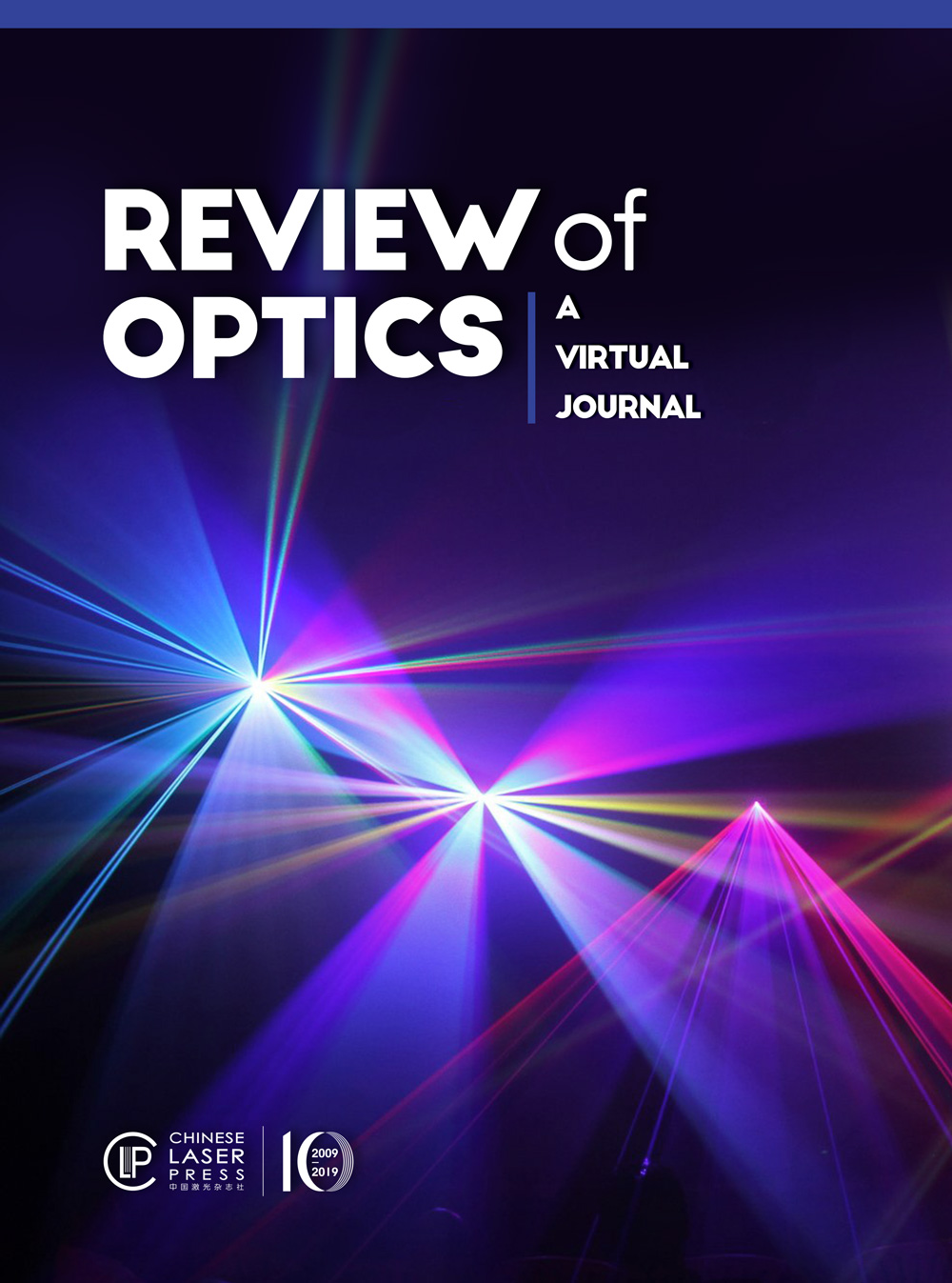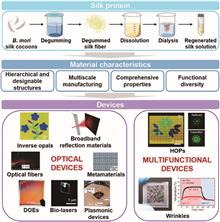 View fulltext
View fulltext
Review of Optics: a virtual journal, started in 2019, is a virtual review journal, and it contains high-quality review articles from journals that published by Chinese Laser Press independently or along with its partners. Review of Optics is published quarterly. It aims to provide readers an alternative way to quickly look through high quality review papers. The scope of Review of Optics covers the full area of optics and photonics and relevant interdisciplinary topics, and meanwhile is in accordance with its source journals: Advanced Photonics, Chinese Optics Letters, High Power Laser Science and engineering and Photonics Research.
The growing demand of sustainable and biocompatible optical devices is stimulating the development of naturally derived biomaterials for optics and photonics. As a versatile biomaterial, silk provides excellent material characteristics that are favorable towards the generation of advanced optical systems. This review examines the use of silk as a material platform in optical applications. Recent advances in silk-based optical devices and multifunctional devices are summarized. The challenges and directions in further designing and fabricating silk optics are also discussed. We envision that silk will play a pivotal role in the future exploitation of sustainable, intelligent, wearable/implantable, and multifunctional optical devices.
The record power conversion efficiency of small-area perovskite solar cells has impressively exceeded 25%. For commercial application, a large-area device is the necessary next step. Recently, significant progress has been achieved in fabricating efficient large-area perovskite solar cells. In this review, we will summarize recent achievements in large-area perovskite solar cells including the deposition methods as well as growth control of the large-area, high-quality perovskite layer and also the charge transport layer. Finally, we will give our insight into large-area perovskite solar cells.
The study of structured laser beams has been one of the most active fields of research for decades, particularly in exploring laser beams with orbital angular momentum. The direct generation of structured beams from laser resonators is deeply associated with the formation of transverse modes. The wave representations of transverse modes of spherical cavities are usually categorized into Hermite–Gaussian (HG) and Laguerre–Gaussian (LG) modes for a long time. Enormous experimental results have revealed that the generalized representation for the transverse modes is the Hermite–LG (HLG) modes. We make a detailed overview for the theoretical description of the HLG modes from the representation of the spectral unitary group of order 2 in the Jordan–Schwinger map. Furthermore, we overview how to derive the integral formula for the elliptical modes based on the Gaussian wave-packet state and the inverse Fourier transform. The relationship between the HLG modes and elliptical modes is linked by the quantum Fourier transform. The most striking result is that the HLG modes can be exactly derived as the superposition of the elliptical modes without involving Hermite and Laguerre polynomials. Finally, we discuss the application of the HLG modes in characterizing the propagation evolution of the vortex structures of HG beams transformed by an astigmatic mode converter. This overview certainly provides not only a novel formula for transverse modes, but also a pedagogical insight into quantum physics.
Exceptional points are spectral singularities in open quantum and wave systems that exhibit a strong spectral response to perturbations. This feature can be exploited for a new generation of sensors. This paper explains the basic mechanism and comprehensively reviews the recent developments. In particular, it highlights the influence of classical noise and fundamental limitations due to quantum noise.
An optoelectronic oscillator (OEO) is a microwave photonic system that produces microwave signals with ultralow phase noise using a high-quality-factor optical energy storage element. This type of oscillator is desired in various practical applications, such as communication links, signal processing, radar, metrology, radio astronomy, and reference clock distribution. Recently, new mode control and selection methods based on Fourier domain mode-locking and parity-time symmetry have been proposed and experimentally demonstrated in OEOs, which overcomes the long-existing mode building time and mode selection problems in a traditional OEO. Due to these mode control and selection methods, continuously chirped microwave waveforms can be generated directly from the OEO cavity and single-mode operation can be achieved without the need of ultranarrowband filters, which are not possible in a traditional OEO. Integrated OEOs with a compact size and low power consumption have also been demonstrated, which are key steps toward a new generation of compact and versatile OEOs for demanding applications. We review recent progress in the field of OEOs, with particular attention to new mode control and selection methods, as well as chip-scale integration of OEOs.













